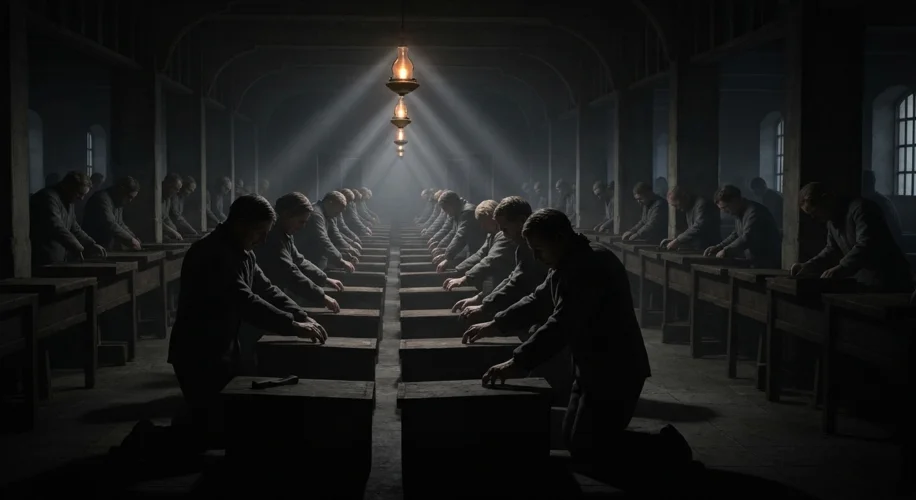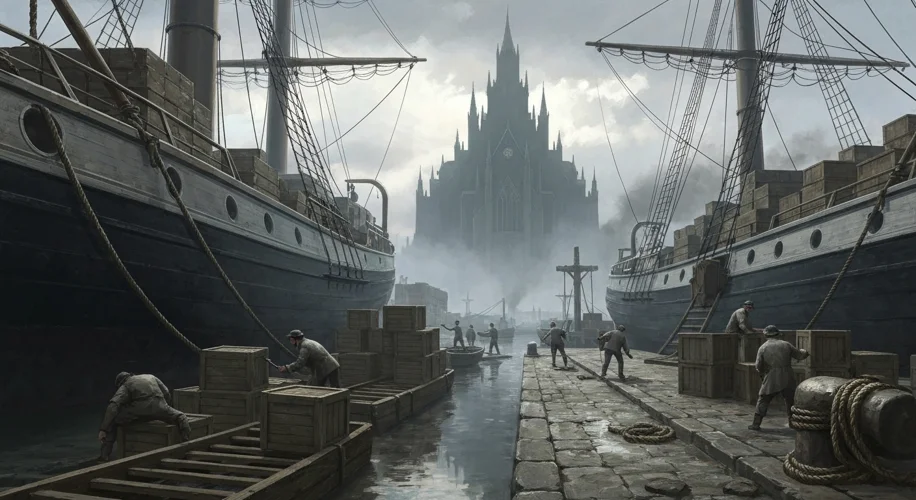The Victorian era in Britain conjures images of stoic resolve, industrial might, and, for many, the stark reality of the workhouse. These grim institutions, designed to house the destitute and enforce a harsh regime of labor, were often seen as a consequence of Britain’s own social and economic challenges. Yet, delve beneath the soot-stained brick and the desperate eyes, and a darker, more insidious connection emerges: the very wealth generated by enslaved people across the British Empire helped to build and sustain these havens of poverty.
For centuries, the transatlantic slave trade was a cornerstone of British maritime and economic power. From the bustling ports of Liverpool and Bristol, ships laden with enslaved Africans set sail for the Americas, their human cargo exchanged for the lucrative products of forced labor: sugar, tobacco, and cotton. This trade, abhorrent in its inhumanity, was also staggeringly profitable. Fortunes were amassed not just by plantation owners, but by merchants, bankers, insurers, and shipbuilders who facilitated and profited from this brutal system.

When the abolition of slavery finally came in 1833, it was not a moment of pure altruism for the British elite. The Slavery Abolition Act, while a monumental step, was accompanied by a massive compensation package – paid not to the formerly enslaved, but to the slave owners. This colossal sum, amounting to 40% of the government’s annual revenue at the time, was drawn from public funds. But where did these public funds, and the broader economic strength that allowed for such a payout, originate? In large part, from the continued exploitation of labor, both enslaved and, increasingly, in newly industrialized Britain.
The wealth accumulated through slavery did not simply vanish with emancipation. It was reinvested, flowing into new industries, infrastructure projects, and financial institutions. This capital infusion played a critical role in funding the burgeoning industrial revolution, which in turn created new social stratifications and widespread poverty. As cities swelled with rural migrants seeking work, the demand for social control and a mechanism to manage the unemployed and impoverished intensified.
The workhouses, established under the Poor Law Amendment Act of 1834, were the state’s answer. Their construction and operation required significant investment. The families and businesses that had profited handsomely from slavery were often the same ones who held influence in Parliament and local government. Their accumulated wealth, therefore, indirectly but directly contributed to the infrastructure of poverty management, including the very workhouses that became symbols of societal failure and state control.
Consider the case of the Peers family, prominent Liverpool merchants whose wealth was deeply entwined with the sugar plantations of Jamaica. Records show that as late as the mid-19th century, after the official end of slavery, members of the Peers family were significant investors in the West India trade and held positions on local boards that oversaw the distribution of poor relief. Their philanthropic efforts, often lauded, were built upon the foundations of generations of slave labor.

The argument is not that every penny spent on workhouses was directly traceable to a slave ship, but rather that the vast economic ecosystem built upon centuries of enslaved labor created the conditions and provided the financial resources that enabled the development and maintenance of institutions like the workhouses. The legacy of slavery in Britain is not confined to the history books; it is woven into the very fabric of its social institutions, a somber reminder of how prosperity for some was built upon the profound suffering of others.
While the Victorian workhouse represented a response to domestic poverty, its origins and sustenance were undeniably linked to the imperial exploitation of human beings. It’s a complex and uncomfortable truth, a chilling echo of chains that continued to bind even after they were officially broken. Understanding this connection is crucial for a complete picture of British history, revealing how the wealth extracted from the bodies and lives of enslaved people inadvertently (or perhaps, inevitably) contributed to the shaping of its domestic social landscape.

